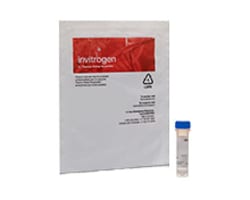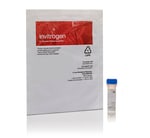Search Thermo Fisher Scientific

Glycerophospholipids
Fatty acid diglycerides with a phosphatidyl ester attached to the terminal carbon. The terminal ester groups are mainly ethanolamine, choline, serine, or inositol. GPLs are highly amphiphilic and are normally components of cellular or vesicle membranes.
Products (9)
Learn More (1)
Documents & Support
(17)9 Products
Filter
The phospholipid, NBD-PE is labeled on the head group with the environment sensitive fluorophore, NBD.
Dye-labeled phospholipids used to monitor phospholipase A (PLA) activity
With excitation/emission maxima ∽501/526 nm
Effective lipid trafficking tracer and general-purpose membrane probes
With excitation/emission maxima ∽560/580nm
Can form excimers at high concentrations
The phospholipid, Texas Red™ 1,2-dihexadecanoyl-sn-glycero-3-phosphoethanolamine, triethylammonium salt (Texas Red™ DHPE) is labeled on the head group with the bright, red-fluorescent Texas Red™ dye.
Excitation/emission maxima ∽496/519nm
Learn More (1)
View all
Lipidomics is a subset of metabolomics that has evolved into a class all its own. Lipidomics is the attempt to map and quantify lipid species sets within a cell or tissue to identify biomarkers and elucidate metabolism at the cellular level.
Documents & Support (17)
View all
Fatty Acid Analogs and Phospholipids—Section 13.2
pH Indicator Conjugates—Section 20.4


